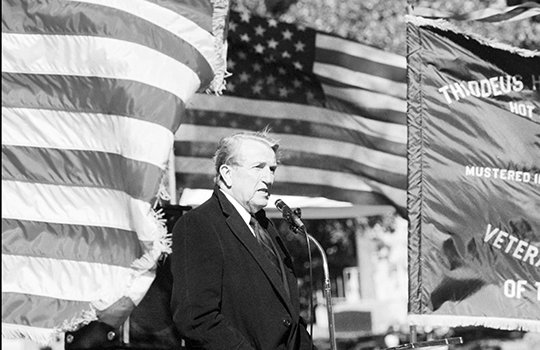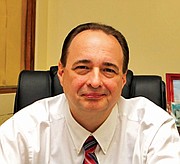When I think of the revitalization of Bathhouse Row, I will always think of Dale Bumpers.
That's not to belittle the contributions of former U.S. Sen. David Pryor or U.S. Rep. Beryl Anthony Jr., or the other public servants and dedicated citizens who worked long and hard to gain federal funding to preserve and protect our national treasures in the early to mid-1980s.
But it was Bumpers, in public speeches, in interviews with myself and other reporters, and during hours of questioning agency officials during protracted Senate subcommittee hearings, who provided the forceful, eloquent voice for preservation and protection of the historic structures that I recall the most.
I know that many people consider the turning point for Bathhouse Row to be August 1985, when William Penn Mott, the director of the National Park Service, walked "in the morning sun ... past several of the dilapidated, unoccupied bath houses along historic Bathhouse Row in Hot Springs," as one out-of-town newspaper reporter noted at the time. Mott had been told that a lack of federal funds had caused a deterioration of the once-popular bath houses that had brought Hot Springs National Park to a "state of crisis," which to me was an understatement of the severity of the issue.
It was an important moment, to be sure, but another came in the spring of that year that I believe resonates to this day. Mary Lou Grier, the acting director of the National Park Service, was testifying before the Subcommittee on Department of the Interior and Related Agencies of the Committee on Appropriations, of which Bumpers was a member, on the Department of the Interior and related agencies' appropriations for Fiscal Year 1986.
Grier was in the hot seat about her agency's budget on April 2, 1985, at the subcommittee hearing, which was held in the Dirksen Senate Office Building in Washington, D.C.
It was during her testimony that Bumpers raised a question about a Park Service program that would become the linchpin for revitalization on the east side of Central Avenue: the historic leasing program.
Grier had deferred to Jerry Rogers, the Park Service's associate director for Cultural Resources, when Bumpers asked for a definition of historic leasing, and part of his answer alarmed Bumpers. Rogers said a leasing proposal must be compatible with the overall purpose of the park; the buildings must not be needed for some other National Park Service use; and the leasing must be for the purpose of assuring the preservation of the buildings.
" ... If you confine us to a tight definition of historic leasing and you say that those bath houses may only be leased in such a way that it is compatible with the historic purpose of the bath houses, you are essentially saying that you can only lease them for the giving of baths; is that true?" Bumpers asked.
Rogers said he didn't mean to represent it that way, but Bumpers pressed on with an amazingly prescient point upon which history would turn in the Spa City.
"Let me ask you this. Let's assume that I am a fairly wealthy entrepreneur and I want to take one of those bath houses. I'm not talking about changing the interior dramatically or anything. But let's assume I want to put in a fairly nice restaurant in one of those bath houses. Or second, let's assume that I want to put in a Main Chance-type spa and maybe even build facilities to house, say, 20 or 25 persons at a time. Would that be in keeping, in your opinion, with historic leasing?"
Rogers said "one cannot abstractly estimate all of the possible uses that could exist that wouldn't be compatible with the properties," but the senator's example was "perfectly suitable."
"That is something I want to nail down pretty well," Bumpers pressed on, "because we believe there is enough interest in Bathhouse Row that every one of those would be leased by reputable people for very legitimate purposes that would be in keeping at least with the aesthetic value of Bathhouse Row and Central Avenue. I was just over there the other night, and there is a certain deterioration, at least on the outside, that is visible on some of those houses, and whoever is going to lease it is obviously going to spend a lot of money decorating, fixing up, and so on, and I think all of them would certainly be willing to keep the architectural integrity of those bath houses."
The upshot of all this committee wrangling came to fruition in September 1985, when a Senate subcommittee approved a proposal from Bumpers agreed to allocate $2.1 million to restore the Fordyce Bath House for use as a visitor center.
"The Park Service has for years promised the Hot Springs community that steps would be taken to enhance ... Bathhouse Row and to establish a visitors center worthy of the park," Bumpers told reporters. "These funds will allow this long-overdue process to begin."
Thank you, Sen. Bumpers. You, and others, will long be remembered for the invaluable contributions you made not only to Hot Springs and Hot Springs National Park, but to the citizens of this community and its visitors, for years to come.
Editorial on 01/06/2016

